Sollicitant pavidi dum rhinocerota magistri
seque diu magnae colligit ira ferae,
desperabantur promissi proelia Martis;
sed tandem rediit cognitus ante furor.
namque gravem cornu gemino sic extulit ursum,
iactat ut inpositas taurus in astra pilas.
Fearfully its handlers poked at the rhinoceros, while he slowly gathered his fierce ire; they despaired of the promised battle, worthy of Mars himself, but at last his previously-known ferocity returned. See, with his twin horns, how he tosses the heavy bear into the sky as a bull throws a straw dummy!
Martial, De Spectaculis Liber, xxii.
omnis habet sua dona dies: nec linea dives
cessat et in populum multa rapina cadit;
nunc veniunt subitis lasciva nomismata nimbis,
nunc dat spectatas tessera larga feras.
Every day brings its own gifts: the line of riches doesn't cease but falls upon the grasping populace; now suddenly fun and frivolous coins rain down, now the grand token offers spectacular beasts.
Martial, VIII.lxxvii.7-10
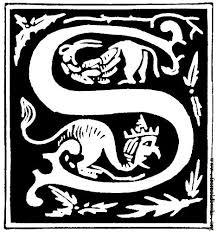 OMETIMES THE RHINOCEROS faces right, and sometimes, for no apparent reason, the rhinoceros faces left. What a cool idea! It's certainly a novelty we don't see on our coins today. It's playful. It's frivolous, it's fun!
OMETIMES THE RHINOCEROS faces right, and sometimes, for no apparent reason, the rhinoceros faces left. What a cool idea! It's certainly a novelty we don't see on our coins today. It's playful. It's frivolous, it's fun!

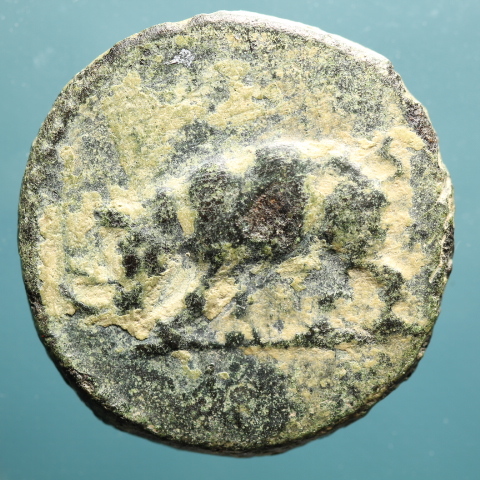
And according to T.V. Buttrey ("Domitian, the Rhinoceros, and the Date of Martial's Liber De Spectaculis," The Journal of Roman Studies, 2007) fun and frivolity might have been the purpose of the coin. Of course I'm talking about Domitian's rhinoceros quadrans, in four varieties, RIC 248-251. Prof Buttrey points out that the Latin "lasciva nomismata," which previous editors have taken to refer to the obscene spintriae minted under the Julio-Claudians (for use in the bordellos where the emperor's numismatic portrait shouldn't appear), actually just means "playful coins," or, as I have translated the second passage from Martial, "fun and frivolous coins."
Were these rhinoceros coins the same ones that Domitian showered upon Martial's grasping populace during the gladiatorial games? Yes, without a doubt. Prof Buttrey thought so, and so do I.
Furthermore I believe, contrary to RIC, that these coins were in continuous use throughout the reign (from Domitian's adoption of the title "Germanicus," GERM, in 83 until the end). The quantity of surviving coins compared with other varieties of the same denomination support this theory. In my opinion, the reason that they aren't dated is because a date would constitute an expiration date and thus restrict their future use.
However, it seems to me that we ought to be able to place them into a consecutive order even without a date. The rhinoceros quadrantes contain two overlapping variables to consider when determining their chronology, whether the rhinoceros is facing left or right and whether the reverse inscription starts at the top or at the bottom. Clearly, since they do overlap, the two variables can't both be relevant to the question of dating.
Here are the four coins in the order given by RIC--
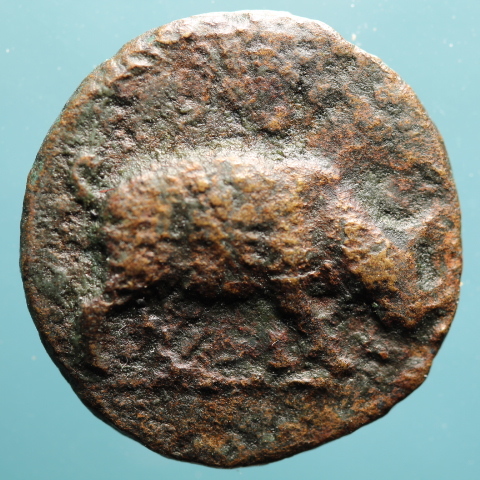
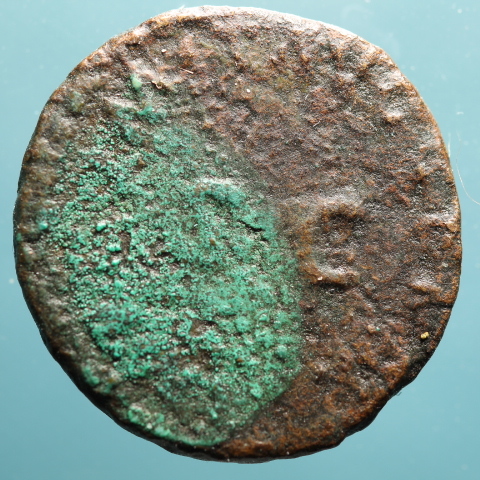
RIC 248
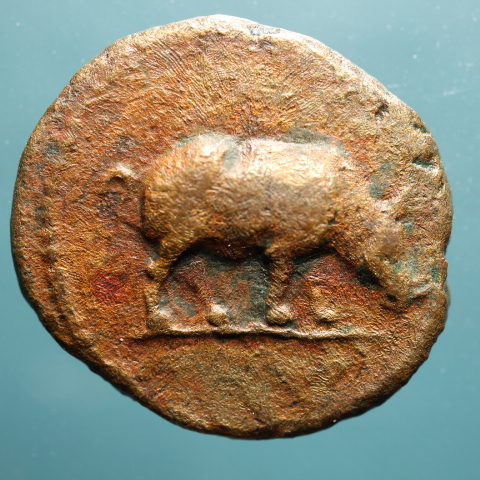
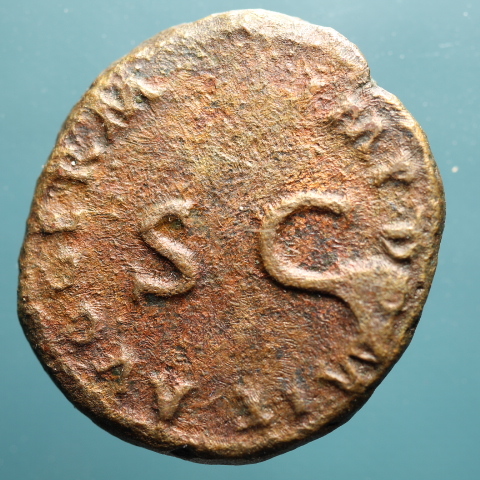
RIC 249


RIC 250
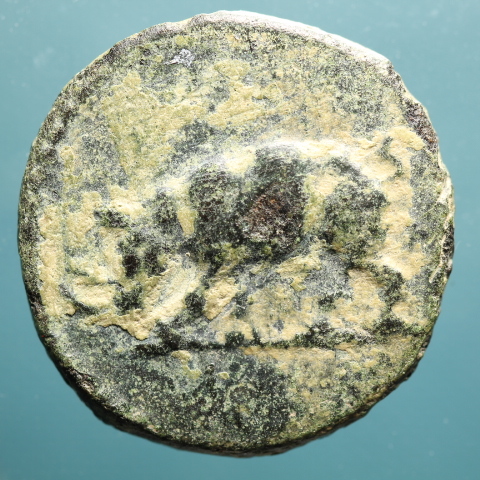
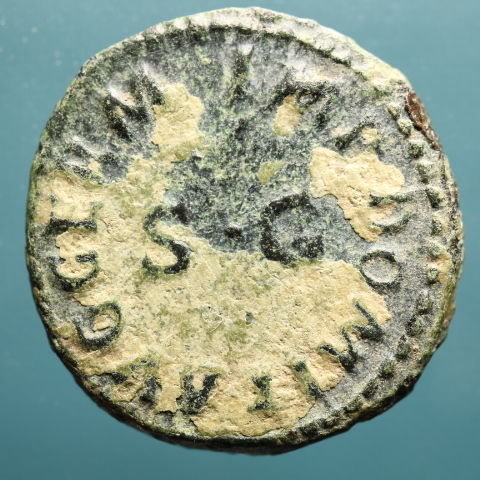
RIC 251
Here is what I propose. As I hinted at the beginning of the article, the left-facing and right-facing rhinoceroi were minted in pairs, as a novelty. The key to the chronology lies in the placement of the inscription. The inscription beginning at the bottom left was the standard practice of the mint--
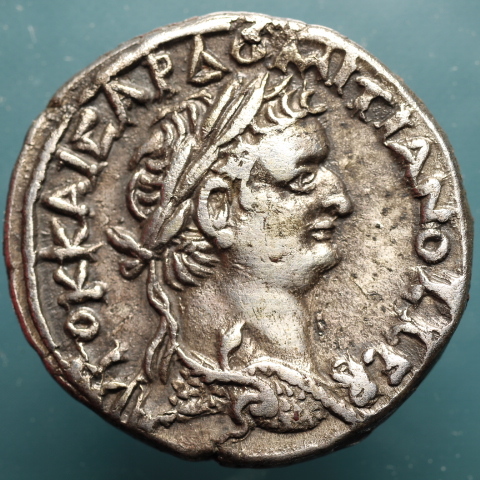
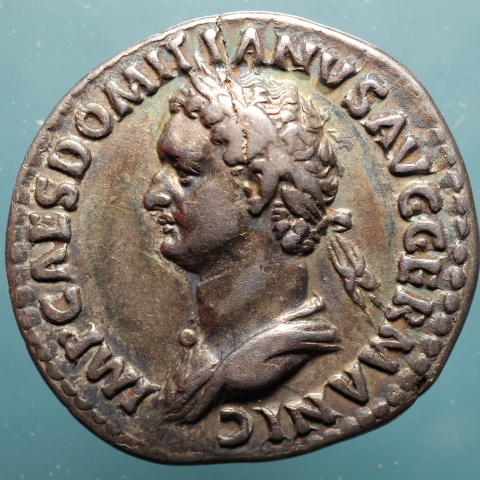
This was so that the start of the inscription could butt up against the bottom of the portrait, and this was the way that the rhinoceros coins were first struck; apparently it didn't occur to anybody right away that, lacking a portrait to butt up against, the inscription placement was totally arbitrary. Therefore, in my opinion, the pair RIC 248 and RIC 250 were minted together first.
Later, when the engravers at the mint realized that they could place the start of the inscription wherever they wanted to, they changed it to something more logical and natural, at the top, since that's how people read things, from the top. The second pair, RIC 249 and RIC 251, were struck together after that realization. In support of this pairing of mine, each left-facing rhinoceros has the same RIC scarcity-rating as its right-facing associate, "C" for RIC 248 and 250 and "R" for RIC 249 and 251.
When exactly did the inscription change-over occur? As I have already pointed out, coins of the early style are common (C), suggesting a longer run, and the latter ones are rare (R). Other than that, I have no idea. That question will probably have to be answered archaeologically.
People sometimes ask me, what were these coins worth to the people who used them? What could they buy? Well, unlike our own smallest denomination, the Lincoln-head penny, the quadrans could actually buy something! A sip of cheap wine, a roll, a piece of sausage, a taste of soup, a visit to the public latrine or to the bathhouse. If a circus spectator should be lucky enough to gather up a small handful of these rhinoceros coins in the morning, he could enjoy a nice lunch and a pleasant spa day afterward.
That's fun (and frivolous) to think about. It's one of the pleasures of coin collecting, and speaking particularly of this little rhinoceros quadrans, how rare is it that a person can own something so specific to a documented historical event, for example the sword George Washington was wearing when he crossed the Delaware or the pen Dr Martin Luther King Jr used to write about his dream? Take another look at RIC 250, for instance--
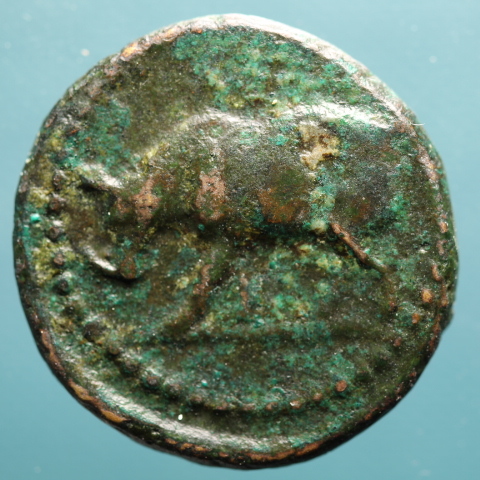

Here is the "grand token" that the notorious Roman Emperor Domitian threw to the spectators at one of his fabulous games. It's been documented. Isn’t that amazing? And it's common enough and inexpensive enough today that just about anybody who wants one can own one.
* * *
This year I will be trying something a little bit new. The big, multi-coin, comprehensive articles, like this one, will appear on the first Sunday of the month. During the rest of the month I will be presenting in more of a "Coin of the Week" style of format.
Another feature on this website ought to be up and running by Groundhog's Day (Candlemas), an "Art Gallery" page for new work produced at my studio at Artisan Forge Studios in Eau Claire. Coin people, please feel free to ignore this addition. It's a way for me to kill two birds with one stone: Since I already have a website in operation, I figure, what do I need with the expense of setting up another one? and the title, Hazelton coll., can easily work both ways.
Next: Maybe something interesting about a provincial coin.

